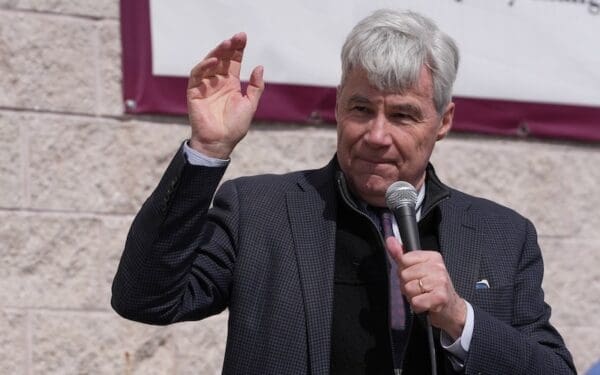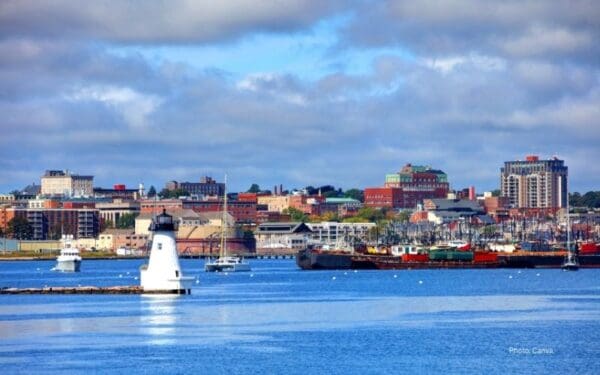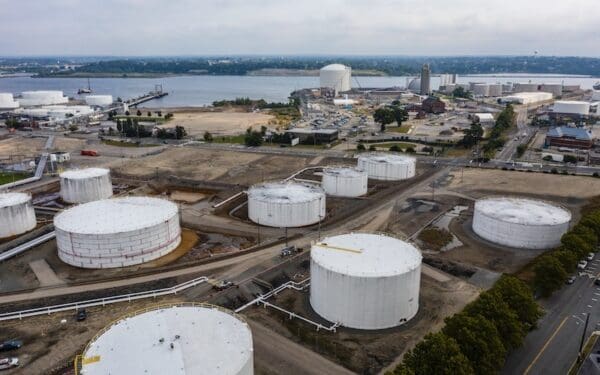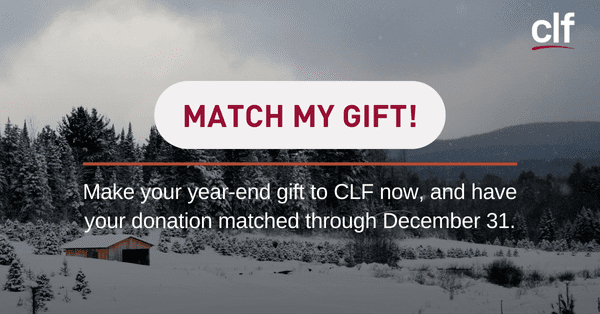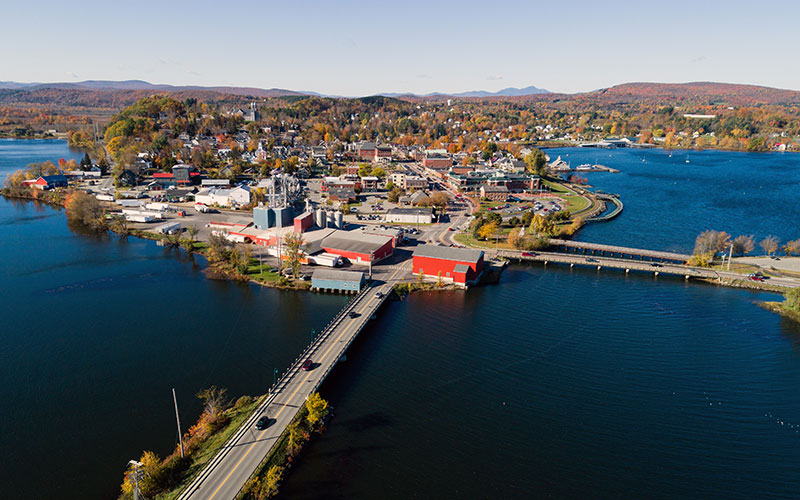
The Coventry landfill can't send its toxic leachate to the nearest wastewater treatment plant, which drains in Lake Memphremagog, but it might be allowed to truck it to other plants in the state instead. The problem: None of those have the technology to treat leachate, either. Photo: NEKTV via Shutterstock
The owners of the Coventry landfill are champing at the bit to supersize Vermont’s only active disposal site. But state regulators are holding out on approving one last permit needed for the expansion. This is because Casella has not yet addressed how it will safely dispose of one of the landfill’s most toxin-laden byproducts: leachate.
CLF has been working to stop this dangerous landfill expansion and calling attention to the danger to our health and our environment posed by leachate. The next stop on the expansion proposal’s list of necessary approvals is a permit to allow it to send its toxic garbage water to treatment facilities around the state and region. We’re keeping watch to ensure that, if the State issues this final permit, it puts the safety of Vermont’s people and environment first.
Landfill leachate is a toxic soup
‘Leachate’ is the term for the liquid pollution that seeps through a landfill’s waste pile when it rains or snows. The leachate contains all sorts of harmful chemicals, many of which are known to cause cancer or other serious harm to human health.
Some of the most alarming chemicals frequently found in leachate – and showing up in sampling of Coventry landfill’s toxic soup – are called per- and polyfluoroalkyl substances (PFAS). PFAS are suspected carcinogens and have been linked to a variety of severe health problems.
Called ‘forever chemicals’ because they never fully break down in our blood or the environment, PFAS have been used widely in nonstick cookware, food wrappers, water-repellent clothing, stain-resistant fabrics and carpets, and other household items – all of which end up in our trash.
Current leachate disposal methods pollute the environment and pose serious health risks
So leachate is nasty stuff. And it’s being created in massive quantities from our trash right here in Vermont. The Coventry landfill currently generates roughly 9.5 million gallons of leachate every year. Now it wants to expand by 50 acres and take in an additional 11 million tons of trash. That would increase its leachate by an additional 6.6 million gallons per year – nearly twice its current toxic output.
That is a lot of toxic liquid material to deal with.
The active part of the landfill has a system intended to capture its leachate, which gets trucked to wastewater treatment facilities around the region. There, it is subject to the same treatment as traditional sewage coming into a plant and then released back into our waters. But those facilities don’t (and can’t) strip many of the chemical poisons out of leachate. For example, much of Coventry landfill’s current leachate waste is sent to the Montpelier wastewater treatment facility, however, the city’s assistant public works director recently confirmed is not designed to treat harmful PFAS.
That means what is left over after treatment is still dangerous to people and the environment when it’s dumped back into our waterways. Even minuscule amounts of these chemicals are dangerous – and they stick around for a long, long time.
Sludge – a slurry of waste and chemicals—coming to a field near you
The other byproduct of the wastewater treatment process is sludge. Sludge has long been used as a fertilizer, including on farm fields here in Vermont. But again, standard wastewater treatment can’t remove the worst poisons from leachate – that means PFAS and other toxic chemicals end up in the sludge, too.
We know very little about the health impact of spreading this toxic sludge onto the fields where our food is grown. The Environmental Protection Agency recently reported that it cannot assess the impact to human health of hundreds of unregulated pollutants, including PFAS, in land-applied sludge.
We do know that when the U.S. Food and Drug Administration sampled various foods grown in environments contaminated by PFAS (either through irrigation with contaminated water, proximity to a PFAS-contaminated location, or through field application of PFAS-contaminated sludge), the toxic chemicals showed up in the food. And, in another example, one raw milk sample obtained from a dairy farm that had applied PFAS-laden sludge to its fields had detectable levels of the poison.
Sadly, we have evidence of this right here in New England. A farmer in Maine who spread sludge on his farm recently had to throw away thousands of gallons of PFAS-contaminated milk, likely because the cows had grazed on fields where sludge had been spread.
So should Casella be allowed to expand and produce more toxic leachate?
Remember, the Coventry landfill is currently generating nearly 10 million gallons of this nasty stuff a year – and it’s being sent to inadequate treatment facilities now. So we already have a big problem. But Casella wants to nearly double its leachate output by drastically expanding its footprint.
Casella needs one more permit to expand the landfill—a “pretreatment permit” is necessary for the landfill to truck its leachate to wastewater plants. Ironically, the State has already prohibited Casella from sending its leachate to the closest treatment facility in Newport because of the dangers its toxicity poses to drinking water. Yet it may be allowed to send it to other facilities in Vermont and New Hampshire instead.
The State is waiting to make a decision on this permit until it can review a report from Casella due in October that will evaluate alternative treatment methods for leachate.
CLF will be closely reviewing Casella’s alternatives report and engaging in the State’s permit review process to make sure this expansion doesn’t go forward at the expense of the health of Vermonters.
What can you do if you’re concerned about toxic leachate disposal?
Here are a few things you can do to learn more about how the Coventry landfill leachate could be impacting your community or drinking water supply, and what you can do about it:
- Figure out where you get your drinking water. Is it from a source downstream from a wastewater plant that accepts leachate from the Coventry facility (that would be Montpelier, Essex Junction, Barre, or Burlington in Vermont, and Concord in New Hampshire)? If so, talk to your town or city officials to express your concerns about PFAS contamination.
- Stay tuned for ways to engage in the public comment period for the last pre-treatment permit that Casella needs to expand the Coventry landfill. Make sure you’re signed up for email alerts from CLF and we’ll let you know when you can weigh in.

